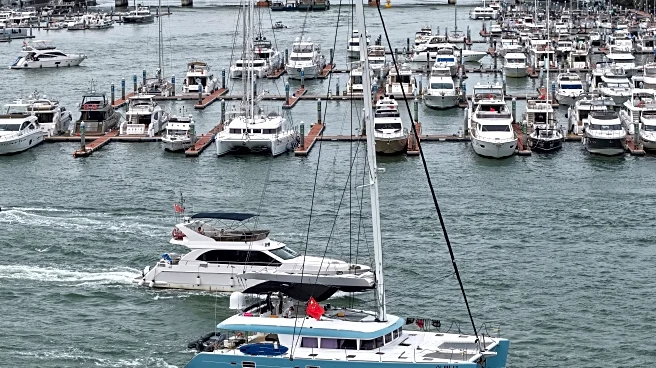What's Happening?
Vietnam is planning to evacuate over half a million people as Typhoon Kajiki intensifies. The storm is expected to make landfall in central Vietnam, prompting authorities to order boats to remain ashore and prepare for potential impacts. The southern Chinese city of Sanya has also taken precautionary measures by closing businesses and public transport. As of the latest reports, the typhoon has strengthened with winds reaching 166 kph and is forecasted to increase further. Vietnam Airlines has canceled several flights, and coastal provinces have banned boats from leaving shore.
Why It's Important?
The intensification of Typhoon Kajiki poses significant risks to the affected regions, potentially leading to widespread disruption and damage. The mass evacuation efforts highlight the seriousness of the threat and the need for effective disaster preparedness. The economic impact could be substantial, affecting industries such as tourism and transportation. The response to the typhoon will test the resilience of infrastructure and emergency services in both Vietnam and China, with potential long-term implications for regional disaster management strategies.
What's Next?
Authorities in Vietnam and China will continue to monitor the typhoon's path and adjust their response plans accordingly. Evacuation efforts are expected to intensify as the storm approaches, with military and emergency services on standby to assist. The situation will require ongoing coordination between government agencies and local communities to ensure safety and minimize damage.













